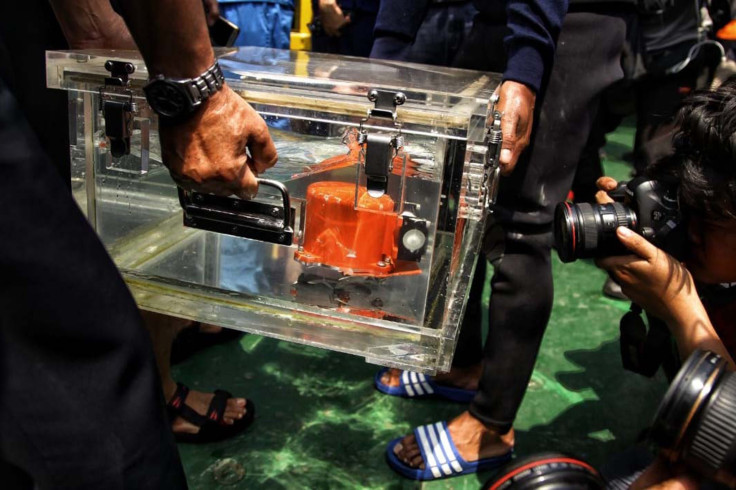Lion Air Crash: First Victim Identified, Black Box Recovered Amid Search Complications

On Thursday, Indonesian Navy divers recovered the black box of the Lion Air Boeing 737 Max 8 aircraft that crashed into the Java Sea on Monday, killing 189 people onboard the plane at the time. The authorities also revealed the name of the first victim identified after the crash.
Jannatun Cintya Dewi, 24, from Sidoarjo, East Java, who used to work as a civil servant for the energy ministry in Jakarta, Indonesia, was identified as the first victim of the crash.
“We’ve examined 48 body bags of victim remains and we could identify one victim through primary identification, which is fingerprints and dental records,” Brigadier-General Hudi Suryanto, in charge of the Automatic Finger Print Identification System (INAFIS), told reporters, The Guardian reported.
Elaborating on the process behind the identification of the first victim, Suryanto added the search and rescue team had recovered Dewi’s right hand on the third day of the investigation after which the forensic department had run a fingerprint scan on it.
The data collected was matched to Indonesia’s national ID card system and cross-referenced with documents and photos provided by the victim’s family. So far, 152 DNA samples of the disaster victims have been submitted by their grieving families to help in the identification process.
On Thursday — the fourth day of the search — the authorities said they retrieved the black box of the downed plane, which is believed to hold vital clues to confirm the cause of the aircraft’s crash. They narrowed down their search area on Wednesday before following “pings” or signals from the black boxes until they were able to determine the exact location.
“We followed the tool, reducing the area in the place the tools were picking up sounds, and it turns out we got the black box,” Indonesian Navy diver Sertu Hendra said.
It is unclear whether the divers lifted the voice recorder of the cockpit or flight data recorder, or both from the crash site onto their ship before bringing their findings back for analysis. David Soucie, a former safety inspector with the Federal Aviation Administration, told CNN on Tuesday that the discovery of the black box could help them answer some burning questions about the crash.
“What’s most peculiar to me is the fact that they didn’t declare an emergency. They just simply said, ‘we’re going back,’" Soucie said. “But when I look at the track of the aircraft after that, the aircraft made a very steep dive after that which is not typical of what they would’ve done. They would have maintained altitude and made that turn and come back to it."
As search and rescue team continued to scour the crash site for the plane’s fuselage, the search and rescue agency chief Muhammad Syaugi said the process was getting complicated and taking longer due to strong currents and oil and gas pipelines in the vicinity.
The possible location of the fuselage was revealed to be 32 meters down, 400 meters north-west of the point where the plane had lost contact. Syaugi said the recovery of the fuselage was of prime importance as he believed many bodies were trapped inside it. Once the divers successfully locate the fuselage, it will be lifted using a crane.
© Copyright IBTimes 2024. All rights reserved.






















